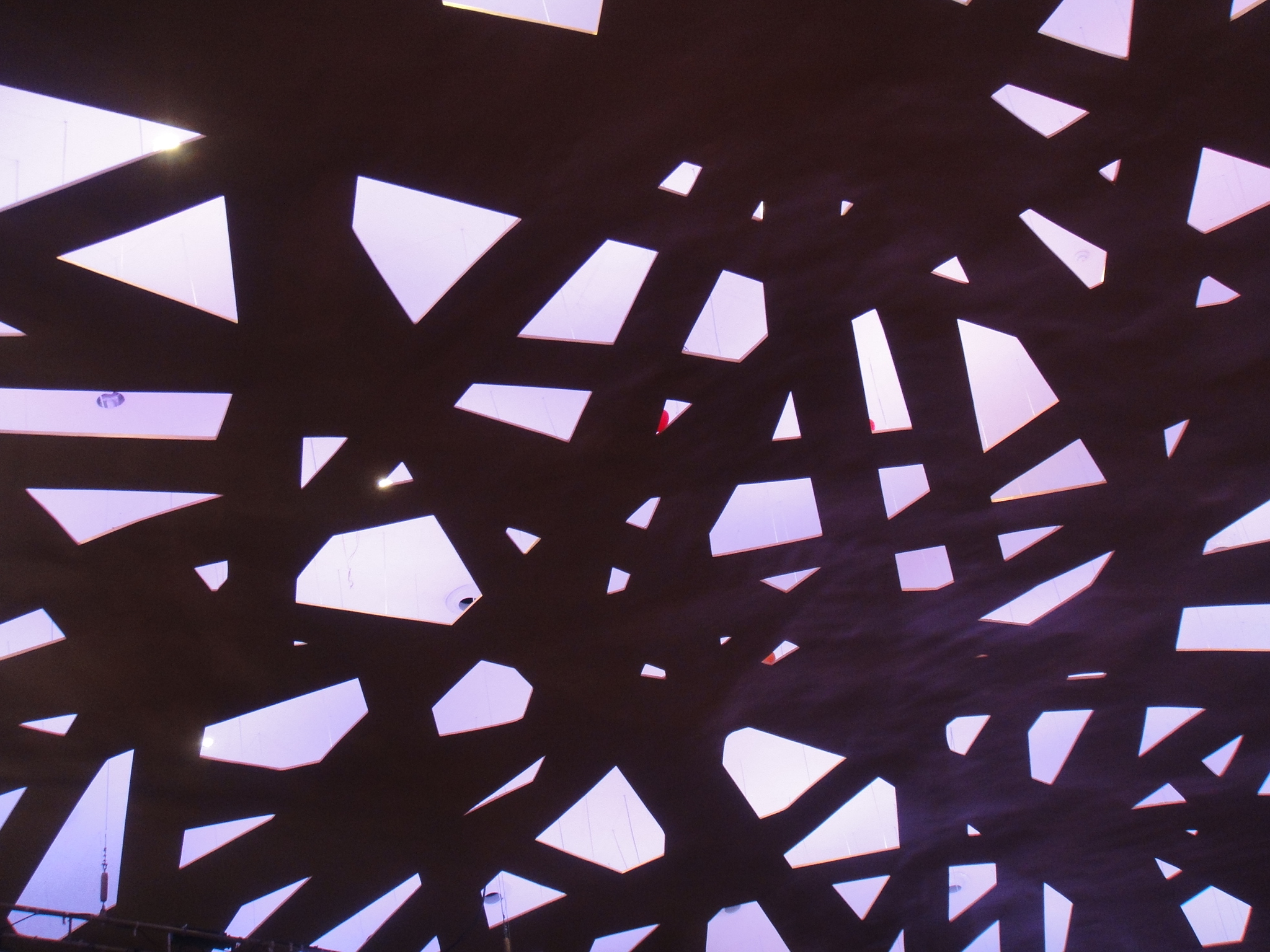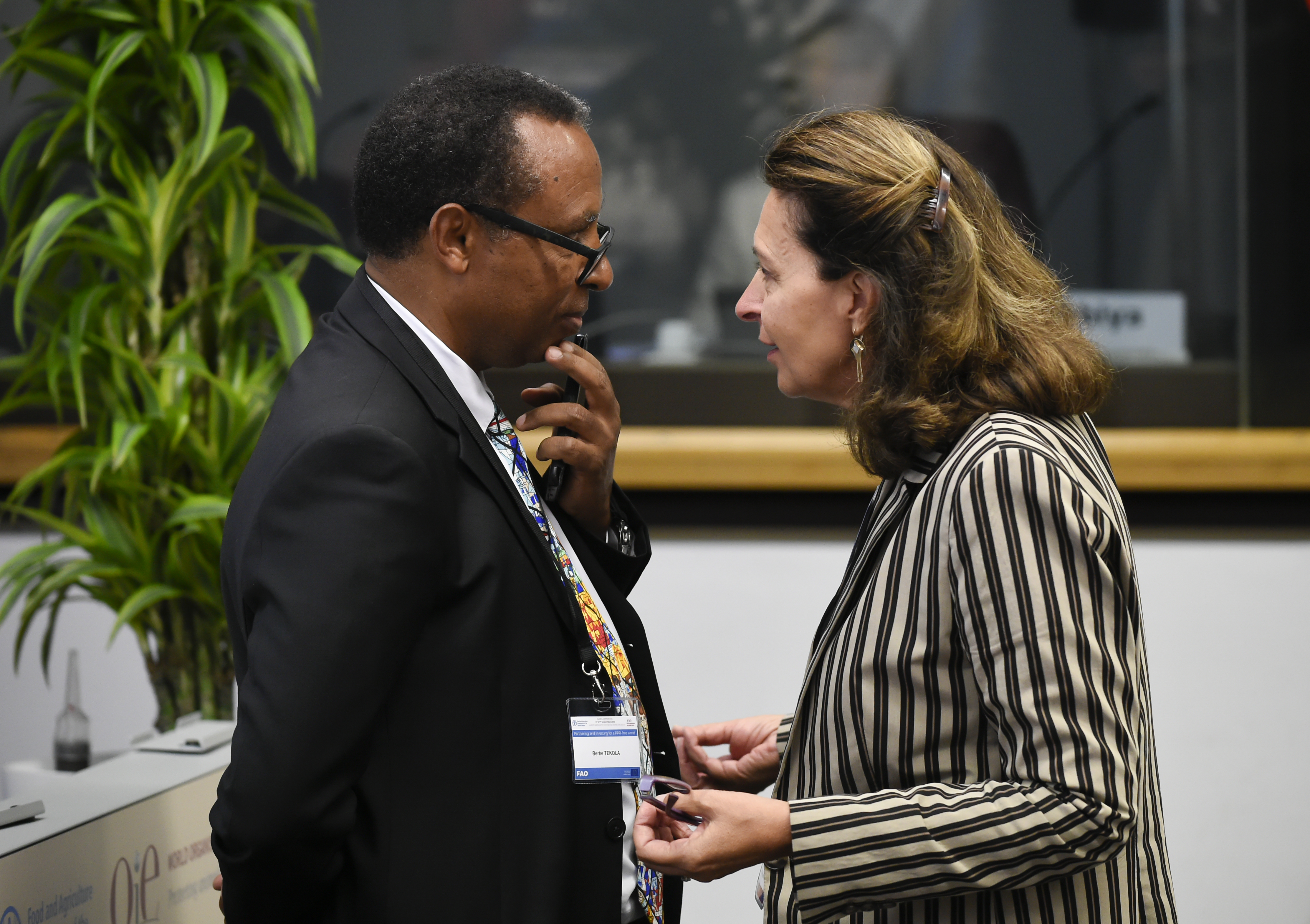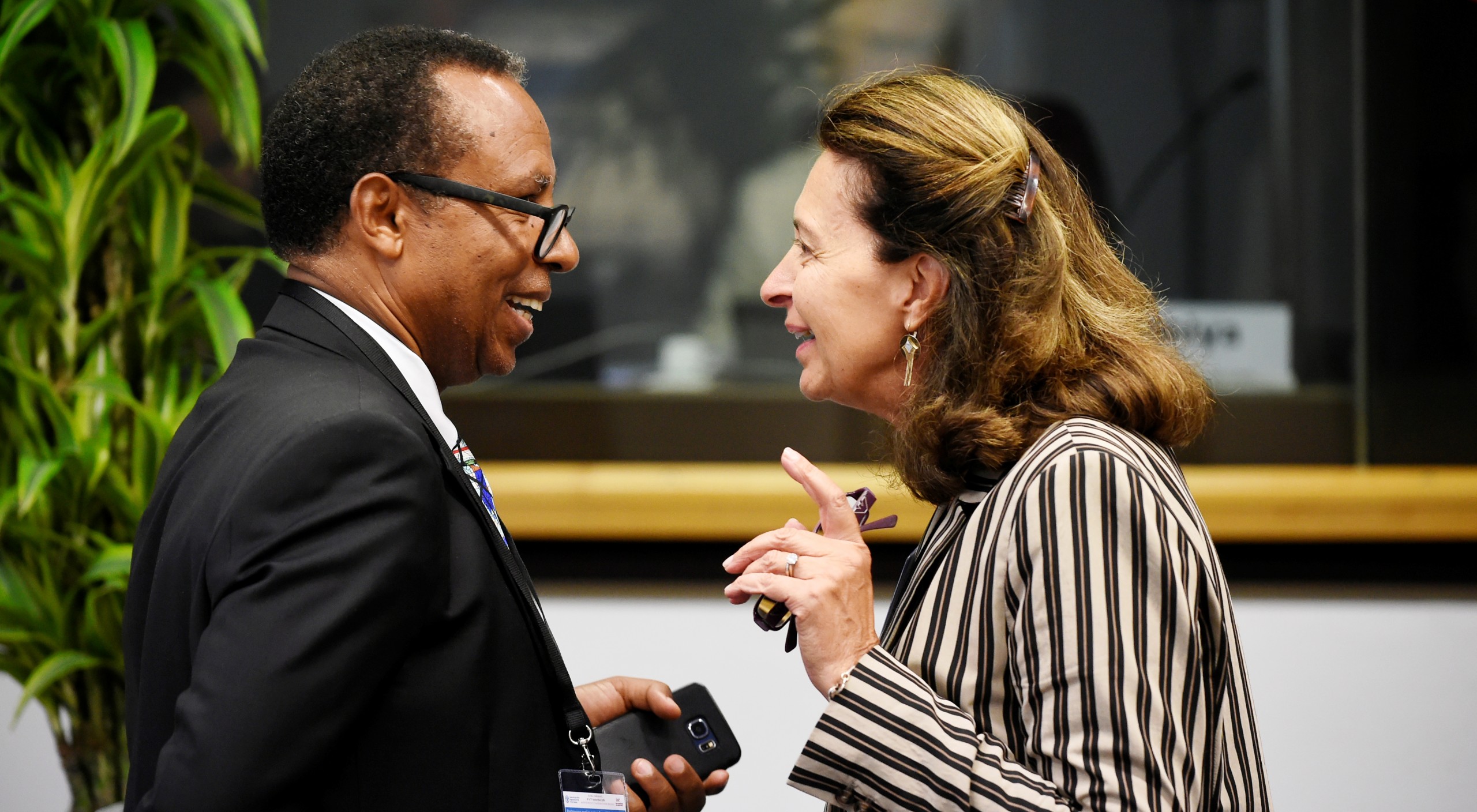
06 September 2018, Brussels, Belgium - Session 1: FAO representative Berhe Tekola, Director of the animal Production and Health Division (L) and OIE representative Monique Eliot, DG OIE (R) talk during Stakeholder Forum. FAO-OIE Global Conference: Partnering and investing for a peste des petits ruminants-free world. 6-7 September 2018 - Albert Borschette Conference Centre, Brussels, Belgium. PHOTO FAO/THYS JOHN PPR 2
Dr Monique Eloit, OIE Director General (left) with Dr Berhe Gebreegziabher Tekola, Director of the FAO Animal Health and Production Division (AGA). Picture © J. Thys (FAO) 2018
Following the inaugural PPR Global Conference held in Abidjan, Cote d’Ivoire in 2015, the FAO and OIE jointly organised the second Global Conference on the Eradication of Peste des Petits Ruminants (PPR), in a bid to establish a technical and financial consensus to implement the first 5-year action plan towards eradication of this disease of goats and sheep (2017 – 2021), the aim still being to get rid of this sheep and goat plague by the year 2030, i.e. in 12 years’ time.
The two day Conference was attended by some 200 professionals, civil society and high-level (ministerial) representatives from around the world, mainly hailing from the estimated 70+ affected countries, amongst which recently affected countries (Bulgaria) and representatives from veterinary authorities of 23 African countries affected by the disease or immediately threatened by it :
Members of academia and researchers, politicians, representatives of the pharmaceutical industry, the meat industry, the wool industry, regional and national farmers associations, donors, international and regional organisations and technical agencies, participated in the stakeholder’s forum on 6 September, followed by the Ministerial Global Conference on the 7 September 2018. Representatives from national and regional public organisations included (but were not limited to) : the Interafrican Bureau for Animal Resources (IBAR) and the Pan-African Veterinary Vaccine Centre (PANVAC) of the African Union Commission, the Secretariat of African, Caribbean, and Pacific Group of States (ACP) the Arab Organization for Agriculture Development (AOAD) of the Arab League, the Comité permanent Inter-Etats de Lutte contre la Sécheresse dans le Sahel (CILSS) in West Africa, the Commission Economique du Bétail, de la Viande et des Ressources Halieutiques (CEBEVIRHA) in Central Africa, the Intergovernmental Authority for Development (IGAD) in Eastern Africa, the International Alliance for Biological Standardization (IABS), the International Center for Advanced Mediterranean Agronomic Studies (CIHEAM), the International Livestock Research Institute (ILRI), along with technical experts of both the Food and Agriculture Organisation (FAO) and the OIE. The Conference was hosted and financially supported by the European Commission in Brussels (DEVCO and SANTE), with additional financial support provided through the African Union (AU). Many non-governmental stakeholders attended the Conference as well, such as (Agronomes et) Vétérinaires Sans Frontières (A)VSF (International, Switzerland, Germany, Belgium, France), Anthra (India), the Association pour la Promotion de l’Elevage au Sahel et en Savane (APESS), the Centre for Sustainable Development (CENESTA, Iran), the Coalition of Pastoralist Civil Society Organisations (COPACSO), the Directoire National des Femmes en Elevage (DINFEL), the Dutch Committee For Afghanistan (DCA) Livestock Programmes, the Fédération des Groupements interprofessionnels du Bétail et de la Viande du Mali(FEBEVIM), the Fédération Nationale des Eleveurs du Niger (FNEN), Heifer International (USA), the International Goat Association (IGA), the Northeast Africa Livestock Council (NEALCO), the Pastoralist Forum Ethiopia (PFE) , the Pastoralist Women for Health and Education (Kenya), Wildlife Conservation Society (WCS), the World Alliance of Mobile Indigenous Peoples (WAMIP) and the Yolda Initiative (Turkey) to name but a few.
The Conference stressed that PPR control and eradication starts with commitment and investment at national level. However, support is also needed from resource partners in building the capacity of national, regional and sub-regional institutions, and bringing about a coordinated, sustained and harmonised approach, necessary for the eradication of the disease. In this respect, the Conference aimed to gather supports from the donor community to plus the funding gap of some USD 340 million out of the nearly USD 1.0 billion needed for the first 5-year action plan, a large amount, but nonetheless modest in comparison to the annual benefits of USD 2 billion should PPR succeed by 2030.
Over and above the direct financial benefits of eradicating PPR, the Conference noted that controlling and eventually eradicating PPR also means fighting rural poverty, ensuring food security and nutrition, and strengthening resilience and national economies.
Several multilateral and bilateral donors attended the conference and made broad, but at this stage –non-specific – commitments to supporting the Global Eradication Programme (GEP) and to helping bridge the gap, at national level, regional level and international level (World Bank, Bill and Melinda Gates Foundation, European Commission (DEVCO), France, Germany, etc….).
The Joint FAO – OIE PPR Secretariat is now tasked with taking the eradication coordination efforts forward and keep the Programme on track to help countries erase this disease from the face of the earth, like they did rinderpest in 2011, by the year 2030, not coincidentally also the target year to attain the UN Sustainable Development Goals (SDG) to which PPR eradication would immensely contribute, especially for the position and health of women. The OIE and FAO are particularly grateful for the financial support provided by the European Commission, which hosted the Conference in the Belgian Capital, with much appreciated additional funding from the African Union Commission through the Interafrican Bureau for Animal Resources (IBAR).
PDF - 1.24MB
PDF - 1.03MB
PDF - 242.88KB
PDF - 294.12KB
All pictures © P. Bastiaensen (oie) 2018, except where mentioned otherwise.


![Global Control and Eradication Strategy (GCES) [short version, without annexes]](https://rr-africa.woah.org/app/themes/OieParent/static/img/shapes/shape-document.svg)
